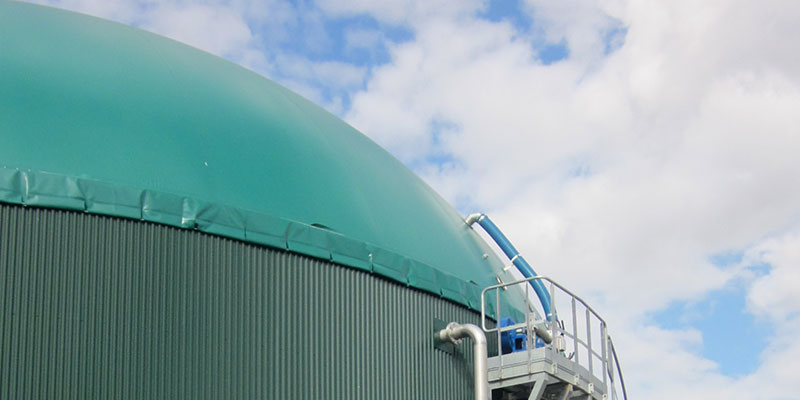
Anaerobic digesters can convert farm waste into methane-rich biogas, while the solid and liquid residues can be used as a nutrient-rich fertilizer.
There is enormous potential to increase the extraction of energy from farm waste
Agricultural waste is one of the largest sources of methane emitted into the atmosphere from human activities. Methane is a potent greenhouse gas but it’s also highly combustible, making it a valuable source of renewable energy when captured.
Anaerobic digesters can convert farm waste into methane-rich biogas, leaving the solid and liquid residues to be used as a nutrient-rich fertilizer. By recovering nutrients for reuse, anaerobic digestion also helps to protect aquatic systems from runoff and prevents overfertilization of agricultural lands.
Any form of organic waste can be used in an anaerobic digester, including livestock manure and crop residues, food waste, yard clippings, municipal solid waste, sludge from treated sewage, paper and pulp, and more. Let’s look at the state of digestion in the United States.
Anaerobic Digestion Has Come a Long Way
Anaerobic digesters were first introduced about 50 years ago, but the interest in using them to process agricultural waste only gained traction in the 1990s. In the past ten years, their use has increased significantly, and it has the potential to grow further still.
According to the American Biogas Council, there are more than 2,300 sites producing biogas across all 50 states. Of these, 332 anaerobic digesters are on farms and process agricultural waste. The balance consists of 66 stand-alone biogas systems that process food waste, 645 digesters at municipal solid waste sites that produce landfill gas, and 1,269 sites that use anaerobic digestion as part of their wastewater treatment to recover water for reuse.
Thousands of Sites Could Use Digesters
Still, there is room for expansion within the U.S. biogas industry, particularly on farms. The American Biogas Council has identified 8,600 dairy, pig, and poultry farms that could produce biogas. In addition, they have identified 470 sites where landfill gas is flared but could be captured, and thousands of other sites disposing of organic waste without anaerobic digestion.
Should these new biogas systems be built, they could produce trillions of kilowatt hours of clean energy annually, thereby reducing emissions by as much as would be achieved if 117 million commuter vehicles were removed from the roads.
The estimated $45 billion required to construct these biogas plants would provide short-term jobs for roughly 374,000 employees and 25,000 permanent jobs for biogas plant operators.
ROI for Anaerobic Digestion
Anaerobic digester projects often yield a return on investment in two to five years. Just how long is influenced by organic load and capital costs, which can be mitigated by the Investment Tax Credit (ITC) incentive to lower a company’s federal tax obligations.
When examining operational and upkeep expenditures, conventional aerobic treatment methods fall within the range of $0.01 to $0.05 per gallon ($5.67 per thousand gallons) for treated wastewater. In sharp contrast, anaerobic digestion not only eliminates ongoing expenses but also has the potential to generate income, typically averaging around $0.39 per thousand gallons of treated wastewater.
A Cleaner Source of Energy
Biogas production provides cleaner sources of energy, allowing farms, businesses, and surrounding communities to become less dependent on fossil fuels. It also offers farmers and other biogas producers additional income from the sale or reuse of products, such as digestate that can be used to enrich soils or used as animal bedding. Anaerobic digestion also reduces the amount of sludge generated and cuts the costs to dispose of it.
Fluence offers a wide range of anaerobic waste-to-energy solutions that can convert organic waste into biogas and digestate. Our team of experts can design a solution for the biomass you need to process. Contact Fluence to learn more about our anaerobic digestion technologies and how we can help you turn waste into a valuable resource, while also cutting emissions and improving your carbon footprint.
